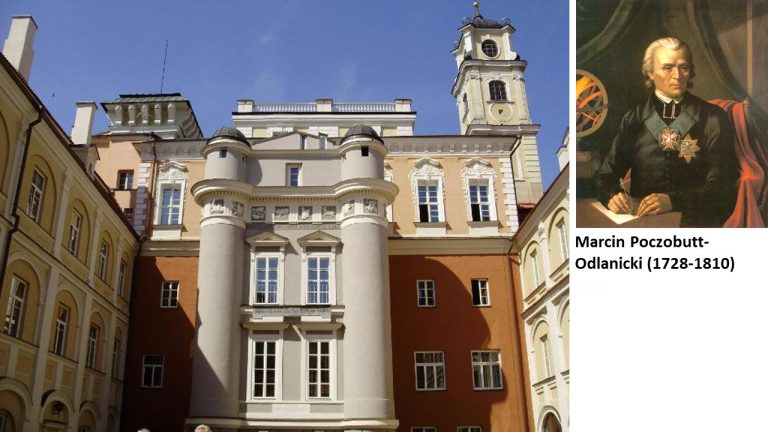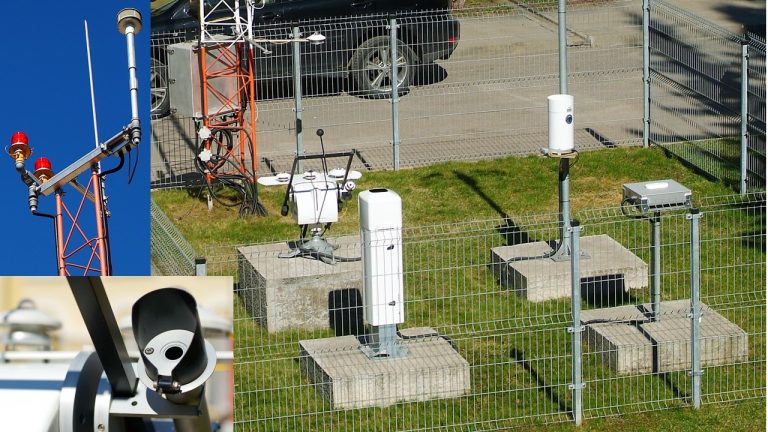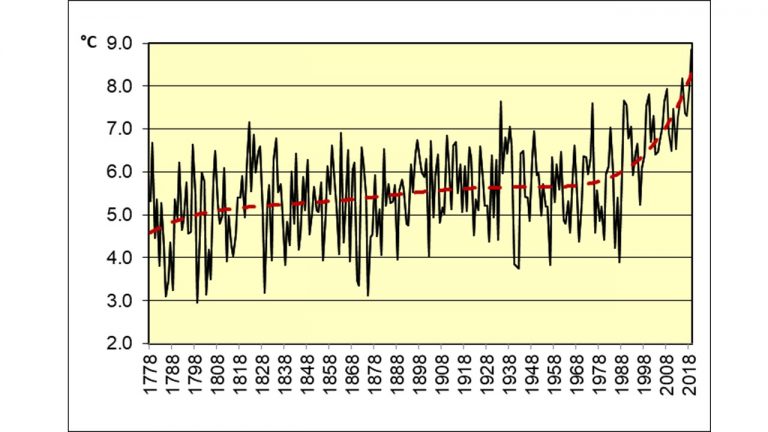250 years of meteorological observations in Lithuania
Regular air temperature (instrumental) observations were started in Lithuania in 1770 by Marcin Poczobutt-Odlanicki (1728–1810), the head of the Vilnius University Observatory. He was the rector of the old Vilnius Academy and for more than 40 years he headed the Vilnius Observatory. The thermometers were brought from the London Astronomical Observatory, and starting in May 1770, he began to measure the air temperature daily at Observatory Tower of Vilnius University (Fig. 1). Only a few European meteorological stations have a longer time series of air temperature observations than Vilnius.

The observations (in Fahrenheit) were published in the daily astronomical log “Cahiers des observations astronomiques faites à l’observatoire royal de Vilna”. Thermometers were attached to the northern window of an observatory building 20.6 metres above the ground and 118 metres above sea level. It is worth mentioning that observation data contain gaps for the first seven years (1770-1776), while a complete air temperature time series is available since 1777.
The location of air temperature observations in Vilnius has changed many times over 250 years. Also there were changes in measuring instruments, observation time and frequency, and data processing techniques during this period. Therefore, today only homogenised data are used for the climate change studies. The precipitation rate as well as atmospheric pressure (using Fusso Barometer) started to be recorded in 1871. Cloud cover observations begun in 1875, and wind speed and direction in 1876. However, solar radiation, and agriclimatic and other observations were started only in 20th century. The weather radar station at Vilnius Airport was launched in 1974. The automation of observing stations started in 2003.
Currently, three meteorological stations are operating in Vilnius: two of them located in the suburban area belong to the Lithuanian Hydrometeorological Service and one station in the central part of town belongs to the Department of Hydrology and Climatology of Vilnius University (Fig. 2).

In other parts of Lithuania, the meteorological observations started much later than in Vilnius; therefore, the air temperature variability in Lithuania during the 18th and 19th centuries is diagnosed according Vilnius temperature observations. They perfectly represent the whole of Lithuania, because the annual and monthly means of temperature in other parts of Lithuania demonstrate high correlations with those at Vilnius (correlation coefficients lies between 0.96 and 0.98).

2019 was the warmest year in the history of meteorological records in Lithuania: the mean annual air temperature was 8.9°C which was 2.4°C higher than climatic norm for 1981–2010 (Fig.3). Also the winter of 2019/2020 appears to be record-breaking: according to preliminary data, its mean seasonal air temperature tends to be positive, about +1.5°C, which is 5.3°C above climatology. Since the end of the eighteenth century, the mean temperature in Vilnius has risen by 1‒2°C in all seasons of the year.
Arunas Bukantis, Gintautas Stankunavicius
Dept. of Hydrology and Climatology , Vilnius university, Lithuania


Kommentare sind geschlossen.